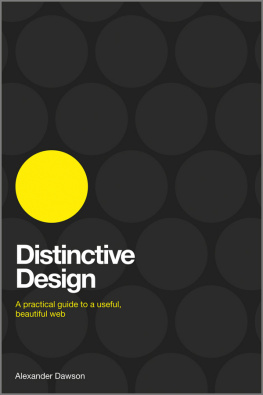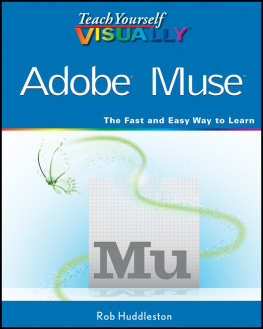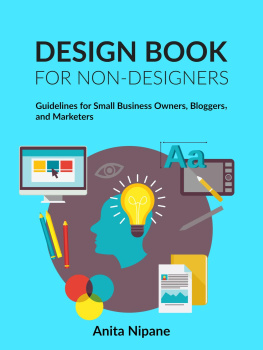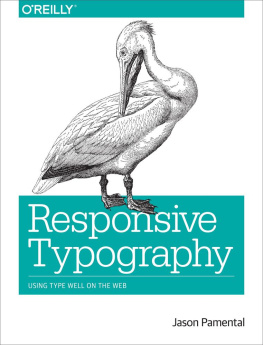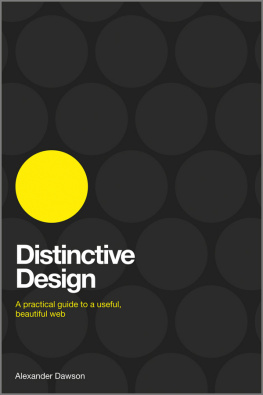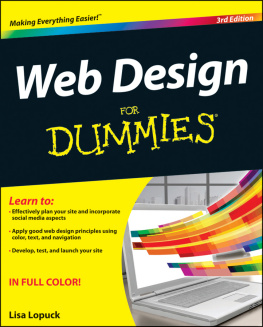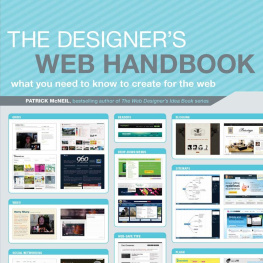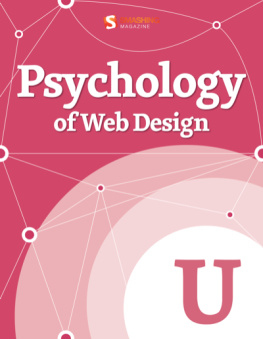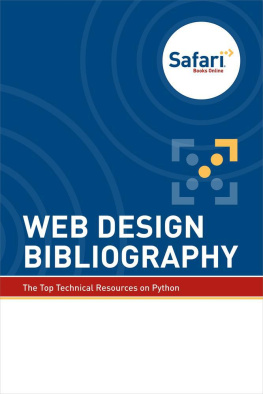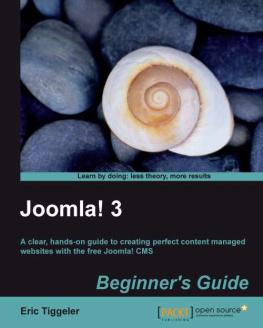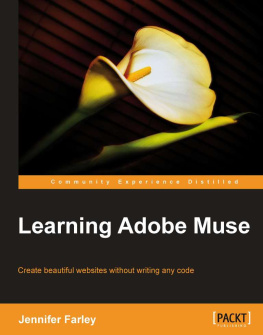Distinctive Design
A Practical Guide to a Useful, Beautiful Web
Alexander Dawson
Distinctive Design
This edition first published 2011
2011 John Wiley & Sons, Ltd
Registered office
John Wiley & Sons Ltd, The Atrium, Southern Gate, Chichester, West Sussex, PO19 8SQ, United Kingdom
For details of our global editorial offices, for customer services and for information about how to apply for permission to reuse the copyright material in this book, please see our Web site at www.wiley.com .
The right of the author to be identified as the author of this work has been asserted in accordance with the Copyright, Designs and Patents Act 1988.
All rights reserved. No part of this publication may be reproduced, stored in a retrieval system, or transmitted, in any form or by any means, electronic, mechanical, photocopying, recording or otherwise, except as permitted by the UK Copyright, Designs and Patents Act 1988, without the prior permission of the publisher.
Wiley also publishes its books in a variety of electronic formats. Some content that appears in print may not be available in electronic books.
Designations used by companies to distinguish their products are often claimed as trademarks. All brand names and product names used in this book are trade names, service marks, trademarks or registered trademarks of their respective owners. The publisher is not associated with any product or vendor mentioned in this book. This publication is designed to provide accurate and authoritative information in regard to the subject matter covered. It is sold on the understanding that the publisher is not engaged in rendering professional services. If professional advice or other expert assistance is required, the services of a competent professional should be sought.
978-1-119-99298-1
A catalogue record for this book is available from the British Library.
Set in 10 point Benton Sans by Melanee Habig, Jennifer Mayberry, and Andrea Hornberger
Printed in the U.S. by CJK
About the Author
Alexander Dawson (@AlexDawsonUK) is an award winning, self-taught, freelance web professional, writer, published author, and recreational software developer from Brighton (UK). With more than 10 years of industry experience he spends his days running his consultancy firm HiTechy ( www.hitechy.com ), writing professionally about web design and giving his free time to assist others in the field.
In recent years, Alexander has become an established web writer providing articles for some of the industrys most respected sites including Smashing Magazine, Six Revisions and SitePoint (where he regularly assists others through their popular forums). In addition, as a member of the Guild of Accessible Web Designers he actively promotes and advocates the benefits of a good user-experience and web standards. When Alexander isnt coding or writing about design and development, he enjoys a game of tennis (or chess) and watching movies.
Credits
Some of the people who helped bring this book to market include the following:
VP Consumer and Technology Publishing Director
Michelle Leete
Associate Director- Book Content Management
Martin Tribe
Associate Publisher
Chris Webb
Publishing Assistant
Ellie Scott
Development Editor
Beth Taylor
Technical Editor
Michael Tuck
Copy Editors
Debbye Butler
Melba Hopper
Editorial Manager
Jodi Jensen
Senior Project Editor
Sara Shlaer
Editorial Assistant
Leslie Saxman
Senior Marketing Manager
Louise Breinholt
Marketing Executive
Kate Parrett
Senior Project Coordinator
Kristie Rees
Graphics and Production Specialists
Melanee Habig
Andrea Hornberger
Jennifer Mayberry
Quality Control Technicians
Melissa Cossell
Susan Hobbs
Indexer
Ty Koontz
Dedication
For the long suffering professionals who work tirelessly to make the web a better place, and those individuals who continue to strive for a more accessible, standards compliant Internet.
Acknowledgments
There are a number of wonderful individuals who have helped and inspired me throughout the journey of writing this book. My thanks firstly have to go out to the entire team at Wiley who have shown me continued support and helpful advice over many a Skype or e-mail conversation. Just a few of these people include Chris Webb (whos recognition of an article and enthusiasm lead to this title), Ellie Scott (whose patience with my questions seemed never ending ), Beth Taylor (my long suffering editor who has helped transform my brains contents into what youre reading), and Michael Tuck (my friend and technical editor who ensured that what I wrote made sense).
I must also give recognition and some well deserved appreciation to the amazing people who have given me opportunities to write for their wonderful sites. Without their support and friendship, this title certainly may have never been written. Thanks must go out to Jacob Gube ( Six Revisions ), Vitaly Friedman ( Smashing Magazine ), Aidan Huang ( OneXtra Pixel ), Amanda Hackwith ( FreelanceSwitch ), Kristina Bjoran ( UX Booth ), Walter Apai ( Web Designer Depot ) and both Jonathan Anderson and Tiffany A. Hampton ( UX Magazine ). If you dont read these awesome resources, you should do!
Next, Ill give thanks to my friends over on SitePoints forums, Learnable, Skype, Windows Live Messenger, Google Talk, IRC, and real life, whove kept me going with interesting, lively discussions throughout the entire writing process. This Includes: Andrew Cooper, Christian Ankerstjerne, Troy Mott, and Ursula Comeau. Finally, my thanks go out to you, the reader who has chosen to support my hard work (and hopefully gain some useful content in the process). Without you, the book certainly wouldnt have been worth it, and if my musings and Web design knowledge can help a single person become a better professional, it will have been worth the effort made.
When the web was new, the role of a web designer was fairly limited. Designers used HTML and liked it, CSS was lacking widespread, graceful support (some things never change), and the concept of designing good interfaces for the visitor was just being explored. With things gradually improving weve lived through two browser wars, the first via desktop browsers and the second (still ongoing) via handheld devices, both with plenty of casualties!
As the web continues to evolve with new standards, so must the methods for dealing with the demands placed upon its infrastructure. With the number of Internet users rising toward two billion, more browsers and devices than you can count, and with networks like Facebook gaining an enviable user base, the need to customize experiences and provide a non-intrusive way of showcasing content is critical.
As I move through the book, I shall not only focus on the key technologies that now influence how content is designed, structured, and visualized (HTML, CSS, and JavaScript.) I also give you plenty of diagrams (because this is a design book and the visuals are what much of our work comes down to). As such, design can and should be considered (whether distinctive or otherwise) both an art and science (with some philosophy thrown in).
Hopefully, as you examine distinctive design, youll get as much enjoyment from reading about the material as Ive had from writing it. Luckily, Im a fan of simplicity and straight forward ideas so you dont need to be a rocket scientist or a brain surgeon to take part. Whether youre getting started in design (but know enough code to implement the changes) or have a background in it, youll still find some useful nuggets of goodness to help you improve your design work.

